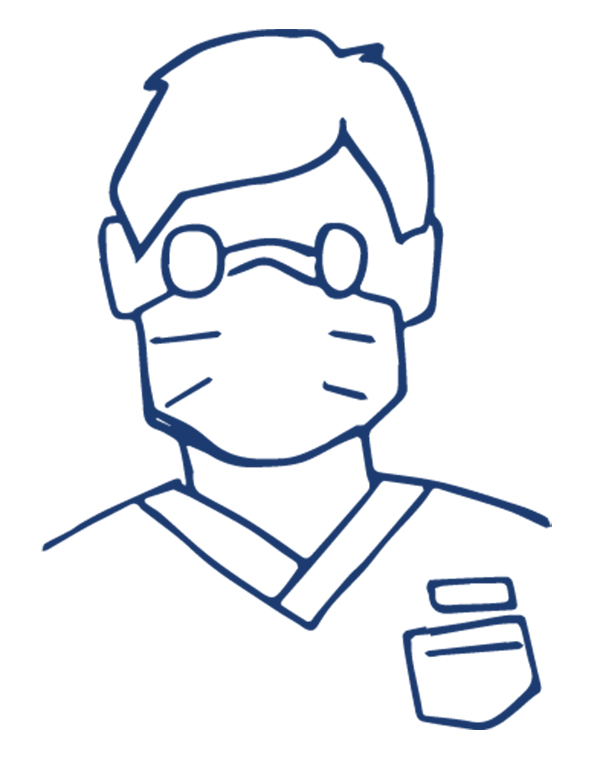As a biology major, there’s a popular notion that I’m either going to wind up in medicine or research. While I’m still hopelessly undecided career-wise, I’ve met countless classmates that have specifically expressed interest in medicine. I’m in awe of their dedication and diligence, but I also can’t help but feel a twinge of sadness. The unfortunate truth is that many future physicians will be entering the workforce in B.C. where, although they may have the best of intentions, they may be unable to offer comprehensive care to their patients.
Universities, like medical schools, are where future healthcare professionals begin their post-secondary journeys and lay down the foundations of who they’ll become. They aren’t just cogs in the healthcare system destined to follow the same fate as their predecessors. They’re the drive behind the system; they’re the future of it. Dr. Chris Pengilly of Victoria, B.C., said that he believes younger doctors are turning away from 80-hour work weeks and towards working in teams. This shows changes are being made already, but we can all do better.
Even as patients, there’s an importance in advocating for changes within our system and how it treats us. We can help healthcare professionals help us. We all participate in this medical system, so as British Columbians we can all play a role in helping it become easier to navigate by being aware of what can be supported or changed.
As of late, a big concern for B.C. residents is the shortage of family doctors taking on new patients. To be clear, there isn’t a shortage of those entering medical school but instead a shortage of those that end up becoming family doctors. B.C. currently runs on a “fee-for-service” model. When you’re seen by a Canadian doctor, they’re paid a flat fee of around $50. There’s no consideration of how complex the issue may be, how long the appointment takes, or how much overhead must be paid for staff and their office’s rent. After seeing 50 patients in a day, the fee paid to them is halved, and after 65 patients this dwindles down to nothing.
 During a CBC News interview, a spokesperson for B.C.’s Ministry of Health explained this cap is enforced so doctors have adequate time to maintain patient records and spend time with patients to make the correct diagnosis. While this sounds reasonable in theory, its execution is limiting how many people can receive care in a day and how doctors are able to create a self-sustaining business. Sixty-five patients in an eight-hour day amounts to seeing about seven people an hour per doctor. What we’re seeing though is that walk-in clinics frequently close early once they’ve hit these caps, so evidently the cap is not helping to maintain a steady flow of patients throughout the day who all get thorough care.
During a CBC News interview, a spokesperson for B.C.’s Ministry of Health explained this cap is enforced so doctors have adequate time to maintain patient records and spend time with patients to make the correct diagnosis. While this sounds reasonable in theory, its execution is limiting how many people can receive care in a day and how doctors are able to create a self-sustaining business. Sixty-five patients in an eight-hour day amounts to seeing about seven people an hour per doctor. What we’re seeing though is that walk-in clinics frequently close early once they’ve hit these caps, so evidently the cap is not helping to maintain a steady flow of patients throughout the day who all get thorough care.
As a response, “one-issue-per-visit” rules are being enforced, and walk-in clinics have been prospering with how quickly they can cycle patients through. One implementation that could improve the efficiency of the walk-in model is having doctors be paid for reauthorizing refills over fax. Often patients are requested to come in every month to refill medications they’ve been on for years, increasing patient volume because the doctor, understandably, needs to be paid for their work.
Alternatively, the cap on how many patients a doctor could be paid for in a day could be increased to allow private practices and walk-in clinics to become more lucrative. This would encourage more new doctors to choose clinic work but also runs the risk of lower quality care for patients being pushed through the system so doctors can make more money. However, with the current limits in place, it’s become common to see walk-in clinics remain open for only four hours a day or not accept additional patients despite being open only for an hour. Not only does this create long waits, but it also puts a strain on hospital emergency rooms that take over the influx of patients needing to see a doctor the same day. With the lifting of the cap, the health industry could attract more talent, but until then doctors could be taking on an increase in patients per day and having a decrease in time to properly care for them.
Michael Lee, a Chilliwack pharmacist and pharmacy manager, has extensive experience working with both doctors and patients and offered his input on a potential new funding model for doctors based on how nurse practitioners are currently paid. Instead of being paid per patient they’ve seen in a day, they could be paid based on how many patients they’ve seen in a given year. This would allow physicians to create flexible schedules for themselves, allow more time for complex issues, and avoid 80-hour work weeks.
Lee explained: “They would be paid a salary if they hit a certain number of patients. It’s tiered … They would profit more from seeing more patients. That disincentivizes closing up shop early just because you’re maxed out for the day. It incentivizes trying to see the patients that are there that need care. It shouldn’t be the doctor that decides when they should care for someone; it should be the patient that decides that.”
Going forward, the B.C. government has proposed funding new primary care clinics across B.C., or interdisciplinary clinics that employ a variety of healthcare professionals working as a team. One might go to a single primary care clinic to book an appointment with a doctor, a psychiatrist, or a physiotherapist, all of whom practice under the same roof. They can be costly to start up but can be extremely convenient for patients in terms of commuting to one location for different types of healthcare and having their care team come to a collaborative decision on the best treatment for them.

On the topic of primary care clinics, Lee said: “Doctors, they’re highly qualified for sure, but they don’t know everything. There are things they consult pharmacists for, that they consult nurses for … having that support would result in better outcomes for the patient and hopefully better care overall.”
While primary care clinics seem like a great alternative to walk-in clinics, having them widespread throughout B.C. seems like a thing of the distant future. What can we, as patients and future physicians, do about this right now?
Not only can we advocate for a modified funding model for our clinics, but we can educate ourselves on alternatives and support them. Some walk-in doctors are making the switch to work for virtual clinics, and they’re becoming more accessible than ever. EQ Virtual and Babylon by Telus Health are two examples of services that allow patients to see a doctor electronically through their computer or cellular device. The wait times are extremely competitive, often being the same day, and the hours of operation even more so since they’re open on weekends and holidays. For prescription renewals, specialist referrals, and treatment of common ailments, virtual clinics are hard to beat.
Virtual clinics still operate on a “fee-for-service” model but can still offer convenient services to patients without family doctors. They’re walk-in clinics without a lot of the hassle. They allow appointments to be booked in advance, for example, they fax prescriptions to your pharmacy for you, and they can consult you anywhere you may be.
Patients who might especially benefit from this are older citizens who make up 18 per cent, or almost one-fifth, of B.C. residents. Unfortunately, they’re also a demographic that frequently lacks technological literacy. If they don’t have access to technology at home, in-person virtual clinics such as the Chilliwack Medical Clinic are becoming more widely available too. They offer the option of commuting in person to a remote location to see a virtual doctor, and they provide the computers and webcams necessary for the appointment.
That’s not to say that virtual clinics don’t have caveats of their own. It’s a great alternative for those without or unable to see a family doctor when they need one, but ultimately not a replacement.
While mentioning that he frequently recommends patients to virtual clinics, Lee said: “EQ Virtual and Telus Health work like walk-in clinics. You can request to see the same doctor, but it’s hard to. You don’t actually get your own family doctor … I think [they’re] a good step, but the problem of not having a family doctor or one prescriber for your care is not looking good as of now.”
Walk-in style clinics offer episodic care, meaning patients come in when they need to see a doctor. These visits can be few and far between. A family doctor helps provide continuation of care, ideally over the course of an extended amount of time, and they’re whom you go to for regular check-ups. With a family doctor you can develop a relationship with a health professional who will get to know your personal and family history, can refer you to a specific specialist based on your unique history, and allow you to book appointments.
Additionally, in the case of chronic and severe pain management, walk-in clinics normally don’t prescribe narcotics, and if they do, it’s usually in small quantities. Narcotics and controlled medications are dispensed in intervals, meaning they can only be refilled once per time interval set by the physician. This is to prevent potential abuse by setting medications to only be filled for, say, 90 tablets every 90 days. Having a family doctor allows these patients to visit walk-in clinics and hospitals less while still having access to medication that allows them to lead functional and pain-free lives.
What Lee suggests is that giving pharmacists the authority to prescribe medication refills and treatments for minor, acute symptoms could also alleviate the stress on clinics and allow doctors time for more complex cases.

“Do you really need to see a doctor for the common cold or a sinus infection? A pharmacist or a nurse [practitioner] could take a look at your symptoms and prescribe whatever’s necessary … Pharmacists are generally the most accessible healthcare professionals in the industry. You can just walk into a pharmacy, walk to the consultation section, and call out their name.”
Lee also mentioned that medical schools could implement a system where students get pharmacy residency experience, and the University of British Columbia is already experimenting with this model. Pharmacies are typically the last point of contact many patients have with the healthcare system, and if there’s an issue with the prescription, be it cost or their insurance, the pharmacy is where patients find out and express their frustration. Having future doctors gain firsthand experience here would help put their work into perspective, increase their knowledge of what’s covered provincially, and let them get to know their patients’ struggles.
“Sometimes doctors prescribe things that might be really expensive, that the patient might not tolerate, that’s not available in Canada, or that’s just not appropriate.”
If you’re considering medicine as your future career and find yourself being drawn to general practitioner work, think about the impact you could make. Becoming a physician who makes a difference doesn’t have to mean running your own business or overworking yourself. While working in a hospital is popular because it pays a salary and allows you to work in a team, you could achieve the same goals and simultaneously help countless people without family doctors by working in a primary care or virtual clinic.
On the other hand, if you’re a patient, know that there are alternatives to family doctors that can be taken advantage of until changes are made to our system. Canada is often heralded for its universal healthcare, and it’s meant to serve us. Long waits for walk-in clinics to meet doctors who rush through your problems and write quick-fix prescription don’t have to be normalized. Any chance available, use your political power to bring about change. B.C. residents should be the ones calling the shots, pun intended, when it comes to their healthcare.
Illustrations: Renee Campbell/The Cascade
Chandy is a biology major/chemistry minor who's been a staff writer, Arts editor, and Managing Editor at The Cascade. She began writing in elementary school when she produced Tamagotchi fanfiction to show her peers at school -- she now lives in fear that this may have been her creative peak.


